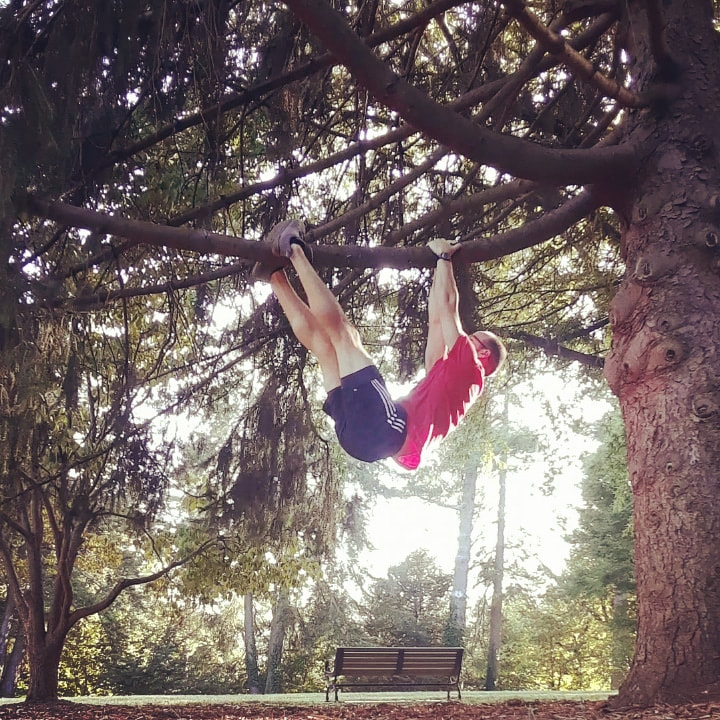|
Guest Blogger: Kai Leathers Who Are We?Many Buddhist traditions claim that there is no "self". That is an esoteric topic for another time, but I believe they are right in more ways than one. Modern science is (re)discovering that we are not just a single biological entity; instead, we must think of ourselves as a superorganism. This may sound like the beginning of a horror movie, but it is actually as mundane as a teaspoon of soil in your backyard (which averages between 100 million and 1 billion bacteria). It is quickly becoming common knowledge that humans cannot survive without a thriving diversity of microorganisms. Even if you have not spent any significant amount of time in the world of holistic health or nutrition, you have probably heard the term "microbiome". Tons of research is revealing that we are not just Homo sapiens ("wise man"), but instead we are host to a huge collection of bacteria, viruses, protozoa, yeast and other fungi that scientists call the microbiome. Indeed, we are never alone. They live on and inside of us, and their lives are essential to the proper functioning of our body systems. In order to optimize health, we must not feed our singular selves, but we must instead feed our collective "superorganism" community - these microscopic colonies in our intestines, or gut. Globally, we are undergoing a sixth major extinction period, and some who study the human microbiome believe our gut bacteria are experiencing a similar extinction. They hypothesize that we may never be able to replace certain bacterial strains that we have lost. Exercise and Gut HealthYou may have cornered a stranger at a dinner party to explain the TED talk you recently watched, discussing ways to increase the diversity of your gut bacteria by changing your diet, but have you heard about how exercise also affects your gut microbiome? Researchers from Rutgers University and University of Illinois at Urbana-Champaign are showing that exercise also has an impact on the amount and type of bacteria in our gut. Experiments have been carried out on mice and humans. One human study looked at previously sedentary lean and obese individuals, and after 6 weeks of supervised cardiovascular exercise lasting a half our to an hour in duration, the composition of their gut microbiomes changed. Certain kinds of bacteria that produce a short chain fatty acid called butyrate, which is associated with positive gut health, increased in number. There was a difference between the concentrations of butyrate-producing bacteria in lean participants in comparison to the obese participants, so there is still more research to be done. These levels of bacteria also decreased after the participants returned to a sedentary lifestyle 6 weeks later, further establishing the link between exercise and the growth of positive species of bacteria. There are many mechanisms that may contribute to the increase in butyrate-producing bacteria, but scientists are still not sure why the change takes place. This is one area where more research is being done. Possible mechanisms include altered gene expression of immune cells in gut tissue, changing the mucus composition of the gut, raising the core body temperature, which results in less blood flow to the intestines, or increasing the activity of bile acids and lactate levels. Keep It SimpleNow that we have another reason to get moving, how do we incorporate this into our practice? A few times a week, you should try to really push your heart rate. Most people might turn to running or cycling, but you can turn any exercise into a "cardio" exercise. One of the most underrated ways to increase your aerobic activity is getting up and down from the ground. In the video below, I demonstrate a MovNat-inspired exercise that is amazing in many ways. This exercise is particularly useful for establishing proprioception, balance, core strength, shoulder stability, and hip mobility. It is the essence of "functional" movement in my eyes because it can increase your athletic skill, or it can simply help you be more efficient at getting up from the ground. Start on your back, then sit up and place one hand right next to your hip and pull the opposite heel in close to your butt. Lift your butt of the ground and pull the free knee under you as you come into a tripod position with your two feet and one hand. Push yourself to standing, then reverse the order to return to the ground. Once you master the movement try adding in a kick through or jumps into the transition, as seen in the video below. You will be surprised at how quickly your heart rate can spike after just a few reps of this exercise. Try throwing in 5 minutes of this exercise in the middle or your normal cardio routine. For example, if you run, run for 10 minutes, then try a get-up for 5 minutes before going back into your run. You can also put this on the beginning of your run for a 5 minute warm-up or throw it on the end of your run for a 5 minute finisher to spike your heart rate before a cool-down and stretch. Insta: move.with.kai blog: https://kaileatherswellness.gator.site/blog/move.with.kai Sources:
hsph.harvard.edu/nutritionsource/microbiome/ https://journals.lww.com/acsm-msse/fulltext/2018/04000/Exercise_Alters_Gut_Microbiota_Composition_and.14.aspx https://www.the-scientist.com/news-opinion/exercise-changes-our-gut-microbes--but-how-isnt-yet-clear-66281 http://nautil.us/issue/30/identity/how-the-western-diet-has-derailed-our-evolution The keto diet is buzzing right now, but what exactly does it mean, and is it for everyone? Well, ketosis is pretty cool for a number of reasons. Whether you are aware of it or not, your body has likely entered ketosis from time to time. We enter ketosis in 2 scenarios: -when we deprive our bodies (almost completely) of glucose -when we fast for ~12-15 hours Ketosis isn't an all or nothing deal. We can be in mild or full-fledged ketosis, or not at all. When glucose isn't available as a result of one of the above scenarios, Ketones are created as an alternate fuel. At this point, some interesting things happen. In even mild ketosis, our antioxidant production is ignited (up to 150 g antioxidants/day). Ketosis also stimulates the production of beta hydroxybutyrate, the ultimate source of fuel for mitochondria. These guys are the powerhouses of our cells and when they aren't firing correctly, you can expect disease to set in. Ketones help mitochondria produce ATP. By increasing ATP, ketones reduce the generation of free radicals, increase production of endogenous glutathione, and act as an anti-inflammatory agent. Ketones also reduce inflammation and oxidation throughout the body but especially in the brain. This is because the brain rapidly takes up ketones, an easily digestible fuel source that is small enough to cross the blood brain barrier (the liver converts MCTs to ketones). If ketones are present even at low levels they increase cerebral blood flow as much as 40%. Studies have shown that increasing ketones is a great strategy to block ionizing radiation and for controlling tremors. To maximize ketones: -Reduce carbs. This doesn't have to look like cutting them out completely. In fact, having such a stark transition from a carby diet to none at all can cause some crazy symptoms like the carb flu, the keto rash, and other undesirable effects. Be gentle with your body and remember that it doesn't like extremes but rather thrives in moderation. We like to follow the diet recommended through the RESTART program, allowing for non-starchy vegetables and low sugar fruits while avoiding starchy carbs, refined sugars, grains, and processed foods (RESTART will be offered again in January 2020 Athens, GA peeps!) -Use a form of intermittent fasting by eating in a 6-8 hour span. This could look like not eating after 7 pm and waiting until 11-noon to eat your first meal the next day. Use MCT oil, grass fed butter, coconut butter, or coconut oil in your coffee or tea to sustain you until your first meal -make these keto muffins! Recipe below :) KETO MUFFINSIngredients6 large eggs 1/4 c olive or toasted sesame oil ½ cup tahini (on the runnier side is best-we love this kind) 1 c raw cashews ½ c raw pumpkin seeds 2 tsp apple cider vinegar 1 tsp sea salt 1 tsp baking soda 1/4 tsp baking powder Sesame seeds and/or pumpkin seeds to garnish DirectionsPreheat oven to 350. Use butter and almond flour to grease and flour a muffin tin.
Add all ingredients listed in order to a food processor or high powered blender. Blend well until you have a completely smooth, creamy batter. Use a spoon to drop the batter into the greased and floured muffin tins. I find a spoon the easiest tool to work with. Continue adding more batter until all 12 muffin holes are filled up (all the batter should be used up at this point). Top with sesame and flax seeds and put on middle rack in oven for 35 minutes. Let cool for 10 minutes before popping out your muffins. Let cool completely before storing in an airtight container in the fridge for a few weeks or the freezer for much longer. They will last on counter for 3 days. I like to have these on hand for a quick breakfast with an egg or smothered in your favorite nut butter. |
Eileen Brantley & Amy WrightWe are Herb Girls Athens, LLC. Read our blog! Archives
November 2022
Categories
All
|


 RSS Feed
RSS Feed
